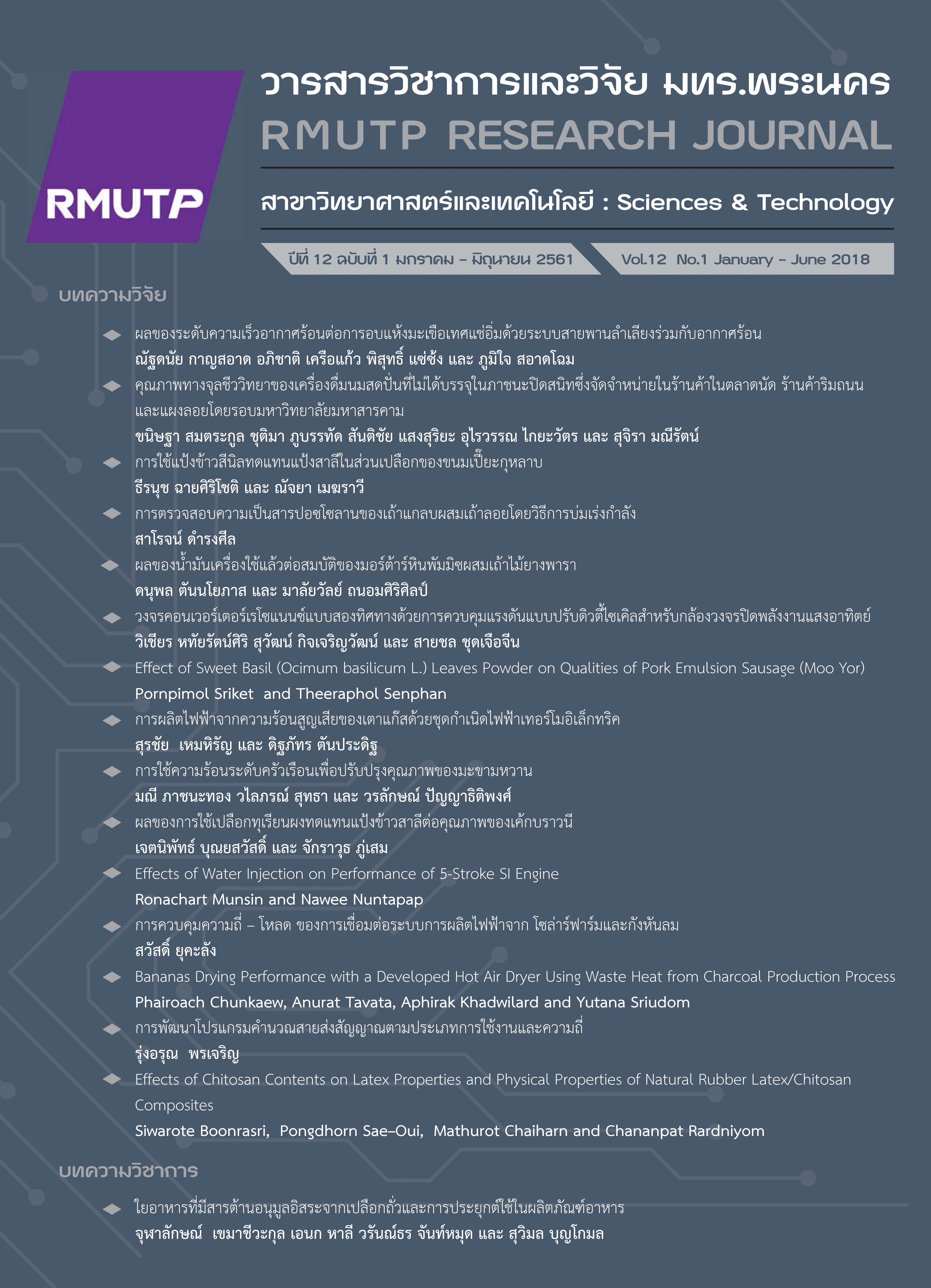Power Generation from Heat Loss of Gas Strove by Thermoelectric Generator Unit
Main Article Content
Abstract
This research aimed to study power generation from heat loss of gas strove by thermoelectric generator unit. As cooking with a gas stove can cause heat loss between the stove and the cookware, this heat loss from gas stove can be converted into the electricity. For the experiment, the researcher used a gas stove model KB5 installed with thermoelectric generator to convert the heat energy from the gas stove to electricity with thermoelectric plate model TEG1-241-1.4-1.2 connected in a series to the power of 4 modules. Then, experimental conditions of the gas pressure in the gas strove were set at 0.1, 0.2, 0.3, 0.4, 0.5 and 0.6 kg/cm2, respectively while the amount of mixed air was constant during the experiment. The results showed that when the gas pressure was at 0.6 kg/cm2, the temperatures of the hot side and cold side of the thermoelectric generator was equal 250.5 °C and 65.5 °C, respectively. It also generated the highest electric power of 53.3 Watts. The power conversion efficiency was 5.3 % at 38.1 Volts with 1.4 Amperes. In addition, when electric was connected to a thermoelectric generator unit with 12 VDC 7-watt LED bulb, the gas pressure in the gas stove were set at 0.3, 0.4, 0.5 and 0.6 kg/cm2, respectively was affected by the difference between the heating temperature and the cold temperature in the range of 185 °C to 51.1 °C, that could lighten up LED bulb.
Article Details

This work is licensed under a Creative Commons Attribution-NonCommercial-NoDerivatives 4.0 International License.
ลิขสิทธ์ ของมหาวิทยาลัยเทคโนโลยีราชมงคลพระนครReferences
Energy Policy and Planning Office. (2017, June-July). EPPO NEWS. [Online]. Available: https://issuu.com/eppojournal/ docs/eppo_journal_120
J. Jarin and M. Anirut, “Thermal Efficiency Improvement of Household Cooking Burner by Porous Radiant Recirculated Cover,” in Proceeding of the 23th Conference of Mechanical Engineering Network of Thailand, The Imperial mae ping hotel, Chiang Mai Province, November 4-7, 2009, AEC-006248, pp. 1-8.
Y. A. Cengel and M. A. Boles, Thermodynamics: An Engineering Approach, 4th ed. Boston: McGraw-Hill, 2002.
T. Panklip, “Energy Saving Equipment for Cooking Stove with Thermoelecric Generator,” Technical Education Journal King Mongkut’s University of Technology North Bangkok, vol. 5, no. 2, pp. 49-57, 2014.
Thai Industrial Standards Institute (TISI). (2550). TIS.2312-2549. [Online]. Available: http://www.ratchakitcha.soc.go.th/DATA/PDF/2550/E/040/17.PDF
J. Jenjit and A. Matthujak, “Effect of Porous Medium Installed in Porous Radiant Recirculated Coveron Thermal Efficiency of Household Cooking Burner,” in Proceeding of the 6th Conference on Energy Network of Thailand, The Empress Hotel, May 5-7, 2010, pp. 1-7.

